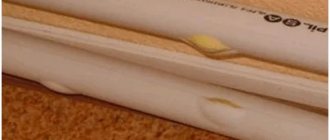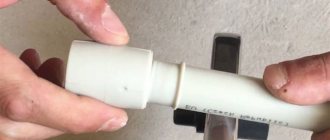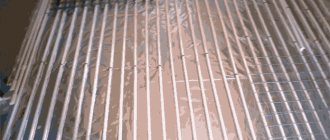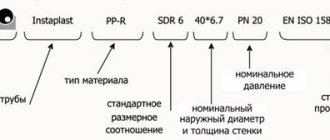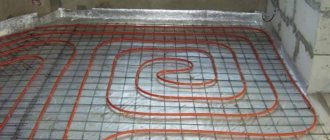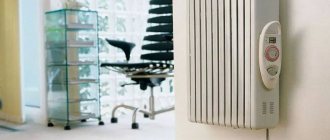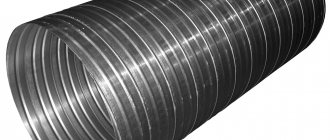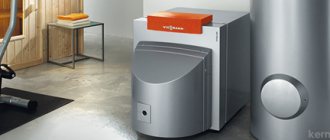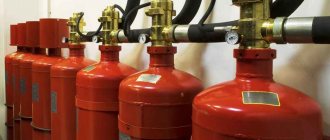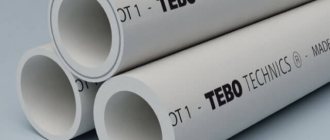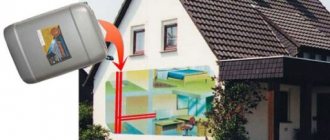- Why choose polypropylene pipes?
- Classification of polypropylene pipes.
- Is pipe life that important?
- Do polypropylene pipes have any disadvantages?
- Features of installation of polypropylene pipes.
- Features of installation of polypropylene sewerage
Everyone knows that not a single heating or plumbing system can do without the use of pipes. As progress progressed, polypropylene began to be used more and more often for their manufacture. There are different opinions about which type of pipeline is better. One of the most controversial issues is the service life of polypropylene pipes. Some believe that these are the most reliable pipes, while others doubt it. Therefore, it is important to understand which pipelines are best installed at home.
Why choose polypropylene pipes?
Polypropylene pipelines have a number of advantages that other types do not have. So, the advantages of polypropylene pipes are as follows:
- polypropylene products are one hundred percent protected from corrosion;
- they are resistant to aggressive environments;
- when the apartment is equipped with polypropylene pipes, then all communication processes proceed silently and without vibration;
Polypropylene pipes - thanks to the perfectly smooth surface inside the pipeline, the water pressure does not decrease;
- the service life of polypropylene pipes varies in length;
- retain heat well, so they are perfect for use in a heating system;
- polypropylene pipelines are absolutely safe for humans, even when heated they do not emit toxic substances;
- Products made from polypropylene are distinguished by their low cost. This factor largely explains why such pipes are so common;
- Many connecting elements have been invented for polypropylene products, so you won’t have to look for fittings for them for a long time;
- polypropylene pipelines are very easy to use. To install such pipes with your own hands, you do not need any special plumbing knowledge. The entire welding will take a few seconds, and the only serious tools you will need are a soldering iron. If necessary, such pipes can be used to create a monolithic system by thermal welding.
Service life of polypropylene water supply and heating pipes
Polypropylene, being an organic material, has much less stability of properties compared to metal. As a result, the service life of polypropylene pipes will vary depending on the temperature both in the hot water supply and in the heating system.
Service life table for polypropylene pipes
| Number of years | Temperature. WITH | PN10, permissible pressure kgf/sq. cm | PN16, permissible pressure kgf/sq. cm | PN20, permissible pressure kgf/sq. cm | PN25, permissible pressure kgf/sq. cm |
| 10 | 29 | 13,5 | 21,7 | 21,7 | 33,8 |
| 25 | 13,2 | 21,0 | 26,4 | 33,0 | |
| 50 | 12,8 | 20,7 | 25,8 | 32,4 | |
| 10 | 50 | 13,9 | 17,3 | 23,5 | 21,7 |
| 25 | 8,1 | 12,8 | 16,1 | 20,0 | |
| 50 | 7,3 | 11,7 | 14,7 | 18,4 | |
| 10 | 70 | 5,3 | 8,5 | 10,7 | 13,3 |
| 25 | 4,5 | 7,3 | 9,1 | 11,9 | |
| 30 | 4,4 | 7,0 | 8,8 | 11,0 | |
| 50 | 4,3 | 6,7 | 8,5 | 10,8 | |
| 5 | 80 | 4,3 | 6,9 | 8,7 | 10,8 |
| 10 | 3,9 | 6,3 | 7,9 | 9,8 | |
| 25 | 3,7 | 5,8 | 7,4 | 9,1 |
Judging by the data in the table, the service life of the product is also determined by the pressure of the working fluid. Polypropylene has a certain strength, but is damaged by excess pressure. Accordingly, the construction of a hot water supply system is carried out depending on this factor.
In fact, there are a number of other factors that influence the actual operating time. These include, for example, the quality of the material itself. Polypropylene is heterogeneous and if the manufacturing technology is not followed, the product, depending on the degree of discrepancy, loses some of its properties. As a result, despite the stated characteristics of the material for hot water supply, it may last significantly less.
The service life also depends on the installation method. If the rules for bending polypropylene pipes are violated or there are no expansion joints, damage to the hot water supply or heating systems is inevitable, since the material has a high coefficient of thermal expansion. Accordingly, when using the table, it is worth keeping in mind additional factors: the actual service life of polypropylene pipes is usually 15% less.
Classification of polypropylene pipes.
All polypropylene pipes can be divided into two categories:
- single-layer;
- multilayer.
All types of polypropylene pipes are divided into four more subtypes:
Type marking on the pipe
- RRN;
- RRV;
- PRR;
- PPs.
The first subtype of polypropylene is the simplest type of pipe. Such systems are used in industry for piping, cold water supply or ventilation.
The second type, RRV, consists of a more complex compound. Contains blocko polymer. This type of material is more durable than the previous one. It has greater shock resistance and is also more widely used in water supply and heating systems.
The third type is made from random copolymer. The reliability of polypropylene pipes of this type has been tested by time. They are widely used in hot and cold water supply systems, as well as for underfloor heating.
The last type of polypropylene products has special differences. Its temperature regime allows water to pass through the system at temperatures up to 95 degrees. In this case, no harmful substances are released, and the pipelines remain safe for humans.
Service life of metal-plastic pipes
Metal-plastic pipes are more reliable and stronger than plastic ones, since they have a multi-layer structure - there is a reinforcing layer of aluminum inside. This product is treated with a polyethylene coating on the outside and inside.
We recommend: How to easily remove old paint from walls?
Communications made of metal-plastic combine the positive properties of all other structures, so they are more durable. The service life of structures made from this durable material reaches 50 years.
The service life of a water supply system in residential buildings, consisting of metal-plastic pipes, depends on the quality of the water and the correct installation.
Is pipe life that important?
The choice of highways on the modern market is huge. They differ both in purpose and in the material from which they are made. Polypropylene is just one of many material options. Piping systems made of steel, metal-plastic and cast iron are also widely used.
Polypropylene pipes and fittings
The service life of the polypropylene system will directly depend on the temperature conditions and pressure in the pipeline. The optimal temperature for use is about 75 degrees Celsius at a pressure of about 7.5 atmospheres. Such pipelines can last at least 25 years! To increase the service life of polypropylene pipes, it is necessary to choose special reinforced options. Then the pipeline can be used at temperatures up to 95 degrees. The undeniable advantage of such a system is that it is not afraid of freezing. If necessary, it expands, and when the temperature equalizes, the pipe contracts back.
Cast iron pipes are also famous for their very long service life. They are practically “eternal”. They can satisfy the needs of their owners for seventy years. But their disadvantage is that they are powerless against corrosion.
At the same time, the service life of steel pipes reaches thirty years. However, it is not always easy to choose the appropriate type of pipeline, which often leads to breaks even among newly installed systems. Steel systems are distinguished by their strength and ability to withstand pressure up to 25 atmospheres. Although steel pipelines are quite popular, it is believed that there are more worthy modern analogues.
Metal-plastic systems have also taken their place among popular pipelines. Their structure has plastic layers as well as metal ones. The advantage of these systems is ease of installation and lightness. Also, the price of the product often plays a big role, and such pipelines are not too expensive.
Metal-plastic pipeline
A metal-plastic pipeline can work well at temperatures of about 95 degrees. Sometimes it even withstands short-term temperatures of up to 110 degrees. The service life of metal-plastic pipes is fifty years.
Durability options
Industrial production offers consumers polypropylene pipes of various diameters and wall thicknesses. These characteristics determine the scope of application of plastic products.
Each category of products has its own markings and corresponding technical characteristics. For polypropylene products, the letter marking PN and digital marking are used, indicating the maximum permissible pressure.
Categories of polypropylene pipes:
- PN 10. Polypropylene pipes with a diameter of 20 to 250 mm are produced under this marking. They are designed for transporting and supplying cold and warm liquids and gases under pressure. The maximum permitted temperature is 45°C, the optimum for the stated service life is 25°C. Pressure is indicated by the number 10 and means 1 MPa (1 MegaPascal, which is about 10 atmospheres).
- PN 16. The purpose of the products is similar to the first. Permitted temperature - 60°C, pressure 16 atmospheres.
- PN 20. This category of products allows their use for hot and cold water supply, water heating, and drainage. Maximum temperature 75°C, permissible pressure 2 MPa.
- PN 25. Products in this category are made with reinforced walls with aluminum foil or fiberglass. They have a more rigid structure and are less susceptible to thermal expansion and deformation. Used for installation of heating (water) and hot water supply systems. Withstands pressure of 24 atmospheres.
We recommend that you read: Replacing old pipes with polypropylene on your own
When choosing products, you should pay attention only to the labeling. The color of the pipes does not convey information, with the exception of black ones. Black polypropylene pipes are more resistant to ultraviolet radiation.
Features of installation of polypropylene pipes.
Installation of polypropylene systems may vary depending on the system in which they will need to work. Such pipelines are often made soldered monolithic, and sometimes connected using fittings. The difference in installation may also be in which sections of the pipeline are installed.
To install polypropylene heating pipes, soldering or fittings are most often used. When pipes are combined in straight sections where there are no turns or branches, connecting them into a monolith using a soldering iron is the best solution. But when it is necessary to place it where the highway turns, or this is a place that will soon require repairs again, then it is best to use fittings.
Most of the fittings used are threaded, that is, in case of alterations, it will be possible to repair this fragment by removing the fitting and reassembling it in a new way.
When choosing fasteners for shut-off valves, it is necessary to strictly maintain the diameter. There should not be even the smallest discrepancies anywhere, otherwise a leak may form under the influence of high pressure.
The service life of other types of pipes, for example, copper, is very long. However, to install copper systems at home, you will have to pay a large amount of money. Although some experts argue that it is becoming increasingly difficult to find high-quality copper products. Modern copper often begins to deteriorate after only five years of active use.
Of course, with the right choice of material for the manufacture of systems, you can have peace of mind for many years. Water pipes made of good polypropylene will serve for a long time, and during this period they will pay for themselves many times over. In case of any repair work, replacing a fragment of the polypropylene system is as easy as shelling pears; you can connect polypropylene products using different methods:
- welding;
- gluing;
- crimping with a coupling.
However, the most reliable connection method is to create a monolithic system by welding.
Features of installation of polypropylene sewerage
Polypropylene is widely used in sewerage installations. Polypropylene sewer pipes also serve humanity well. Since this material is resistant to aggressive environments, a polypropylene pipeline can be freely placed underground. At the same time, certain conditions must be observed:
- the depth of the trench should be twenty centimeters greater than the minimum permissible depth. This is due to the fact that the polypropylene system allows cold to pass through more and can freeze. Although nothing will happen to her herself, at the same time it will cause temporary inconvenience;
- the width of the trench should be the minimum permissible;
- The pipeline slope is allowed around 0.005.
These factors should be taken into account, if only because polypropylene pipes themselves are softer than metal ones, which means that due to unexpected load on the surface, the pipeline may be damaged. Keeping this in mind, you can completely trust your communications to polypropylene systems.
